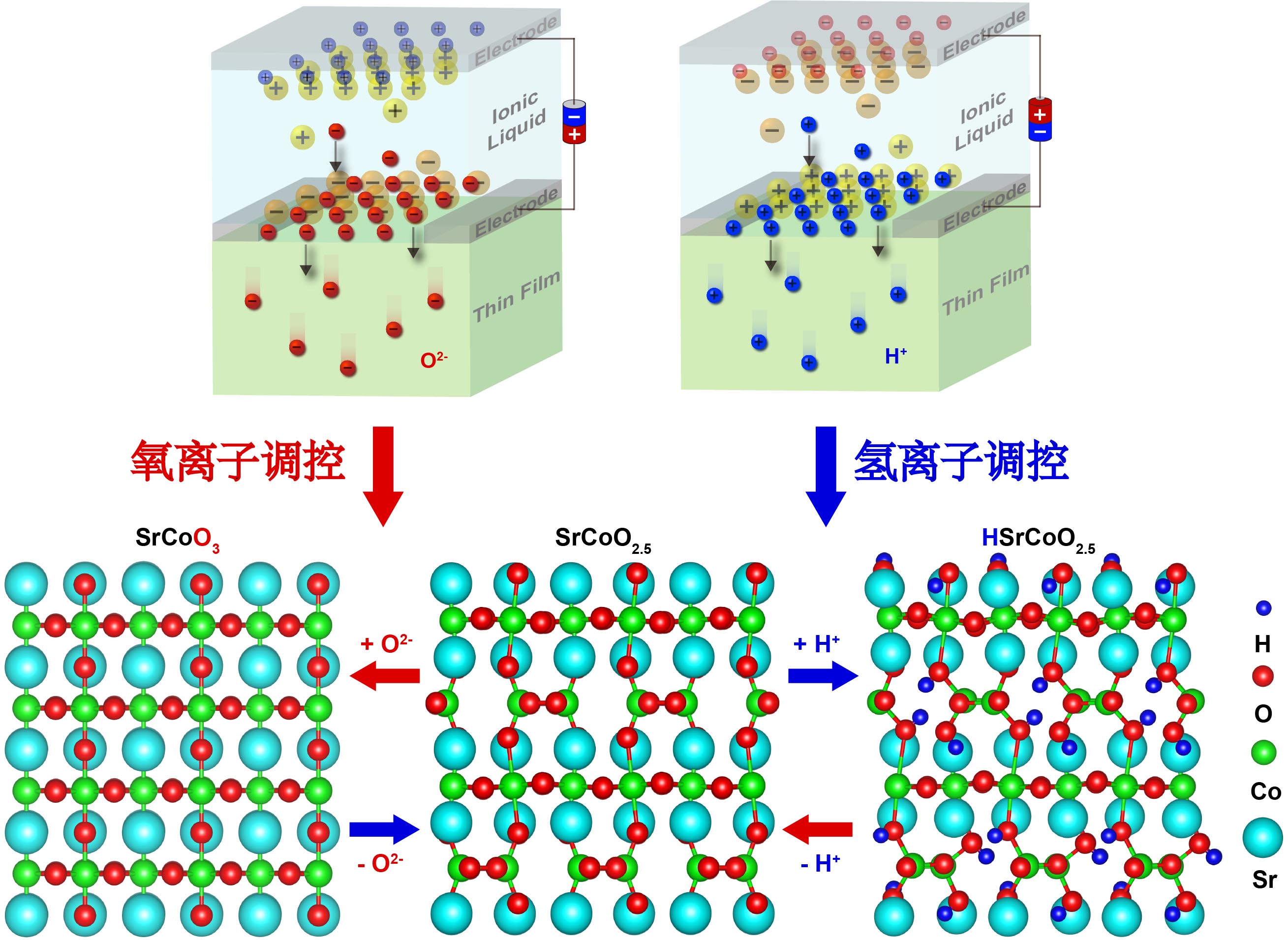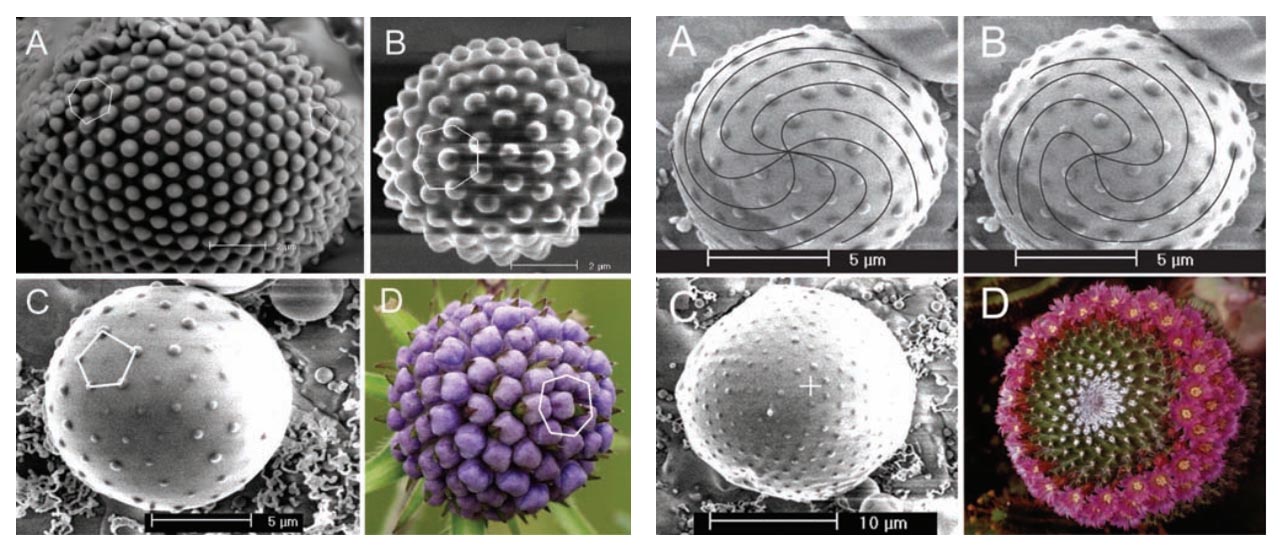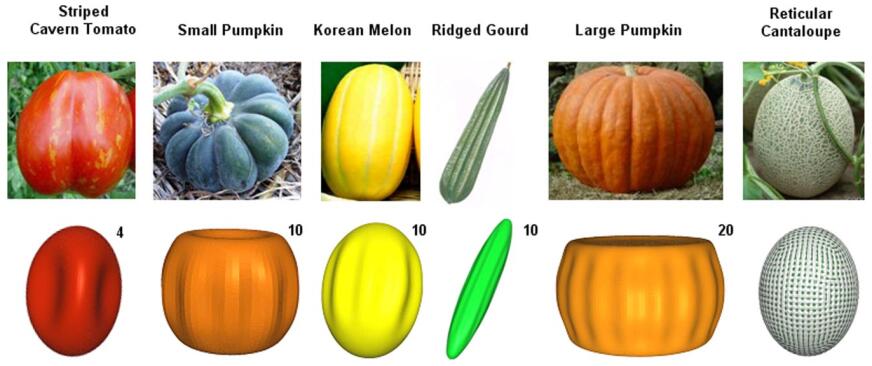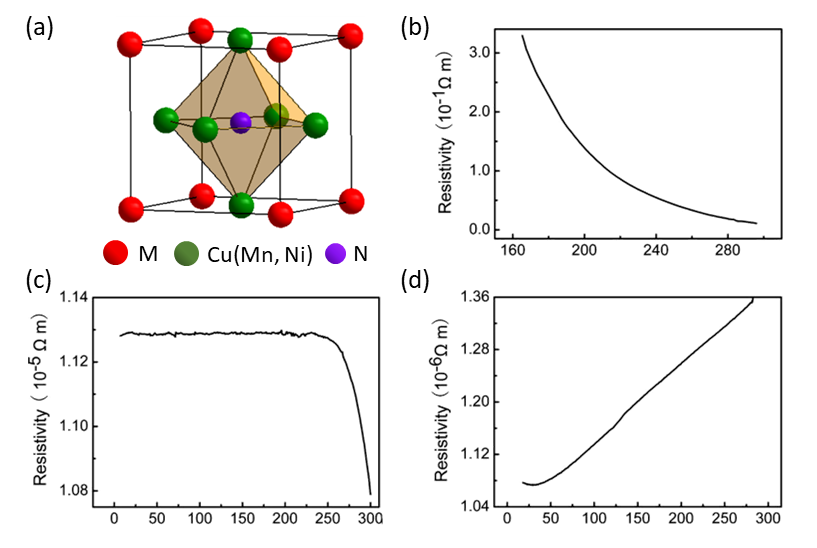
|
1. Emergent Phenomena in Oxide Materials
|
||
|
Due to the strong correlations among the lattice, charge, orbital and spin degrees of freedom, complex oxides have demonstrated a rich spectrum of novel physical properties, such as superconductivity, colossal magnetoresistance, ferromagnetism, ferroelectricity and multiferroicity, etc. Currently, our research mainly focuses on epitaxy growth of newly designed complex transition metal oxide thin films, exploration of the exotic physical and functional properties of these materials, and fabrication of the model devices based on the discovered interesting properties with novel functionalities.
|
||
| 1). Thin film growth of newly designed complex transition metal oxides by cutting-edge pulsed laser deposition (high crystalline quality) and off-axis (or on-axis) oxide sputtering (wafer size). |
|
 |
| Fig. 1. Pulsed laser deposition (PLD) and off-axis sputtering systems | ||
|
|
2). Exploration of the exotic physical and functional properties of these oxide materials by electric-field control of ionic modulation, along with doping and strain. The electric-field control of ionic modulation, as a new degree of freedom to design materials, offers a brand-new pathway to regulate the material functionalities, which can redesign the material functionalities even after the growth, comparing with the conventionally employed strain or chemical doping. Moreover, this newly developed method provides opportunities for the electric-field control of multistate phase transformation with rich functionalities, and can be widely employed in a wide range of material systems to generalize exotic crystalline structures and novel physical properties. |
|
|
Fig. 2. Electric-field control of dual ion switch and multi-state phase transformation
|
||
| 3). Fabrication of the model devices based on the discovered interesting properties with novel functionalities that can be used in the fields of information storage, energy storage, energy conversion, etc. |
|
 |
| Fig. 3. Electrochromic and magnetoelectric coupling by electric-field control of ionic gating | ||
| References:
1. N.P. Lu, et al., Electric-field control of tri-state phase transformation with selective dual-ion switch. Nature 546, 124 (2017). (News & Views: Functional materials at the flick of a switch. Nature 546, 40 (2017)). 2. Q.H. Zhang#, X.He#, J.A. Shi#, N.P. Lu#, et al, Atomic-resolution imaging of ectrically induced oxygen vacancy migration and phase transformation in SrCoO2.5-σ. Nature Commun. 8, 104 (2017).3. H.B. Li, N.P. Lu, et al., Electric-field control of ferromagnetism through oxygen ion gating. Nature Commun. 8, 2156 (2017). 4. D. Yi#, N.P. Lu#, X.G. Chen, S.C. Shen and P. Yu. Engineering magnetism at functional oxides interfaces: manganites and beyond. Journal of Physics: Condensed Matter 29, 443004 (2017). |
||
|
2. Stress Induced Ordered Patterns
|
|
| Growing highly ordered micro- and nanostructures in a designed pattern with acceptable size and shape uniformity presents an enormous challenge to materials scientists. Stress self- assembly offers a promising approach, in that it allows the production of ordered structures without the need for high-precision patterning equipment. Fibonacci number patterns and triangular patterns with intrinsic defects occur frequently on nonplanar surfaces in nature, particularly in plants. By controlling the geometry and the stress upon cooling, these patterns can be reproduced on the surface of microstructures about 10 micrometers in diameter. Spherules of the Ag core/SiOx shell structure, possessing markedly uniform size and shape, self-assembled into the Fibonacci number patterns (5 by 8 and 13 by 21) or the triangular pattern, depending on the geometry of the primary supporting surface. Under proper geometrical constraints, the patterns developed through self-assembly in order to minimize the total strain energy. This demonstrates that highly ordered microstructures can be prepared simultaneously across large areas by stress engineering. |
Fig. 4. Triangular and Fibonacci number patterns driven by stress on core/shell microstructures
|
|
Fig. 5. Comparison between several fruits/vegetables and examples of corresponding simulated buckle shapes on model spheroids |
Spontaneous buckling of thin films on compliant substrates can achieve numerous highly ordered patterns due to mispontaneous buckling of thin films on compliant substrates matched deformation, which can be manipulated in different ways. Although pattern formation in plants usually involves various complex biological and biochemical processes, such distinctive yet simple features make one wonder whether there exist other relatively simpler mechanisms contributing to the morphogenesis at the macroscopic scale, and the possibility of stress-driven buckling may play an important role in the morphogenesis of some plant parts, in a way that is similar to the energy-minimizing buckling of a compressed shell on an elastic foundation. |
| References:
1. C. R. Li, X. N. Zhang and Z. X. Cao, Triangular and Fibonacci number patterns driven by stress on core/shell microstructures. Science 309,909 (2005). 2. C. R. Li, A. L. Ji, L. Gao and Z. X. Cao, Stressed triangular tessellations and Fibonacci parastichous spirals on Ag core/SiO2 shell microstructures. Adv. Mater. 21, 4652 (2009). 3. G. X. Cao, X. Chen, C. R. Li, A. L. Ji and Z. X. Cao, Self-Assembled Triangular and Labyrinth Buckling Patterns of Thin Films on Spherical Substrates. Phys. Rev. Lett. 100, 036102(2008). 4. J. Yin, Z. X. Cao, C. R. Li, I. Sheinman, and X. Chen, Stress-driven buckling patterns in spheroidal core/shell structures. PNAS 105, 19132 (2008). |
|
|
3. Anti-perovskite Nitrides
|
|
|
Same as the perovskite oxides, the anti-perovskite compounds have attracted much attention in recent years due to the existence of strongly correlation with different freedoms (charge, lattice, spin and orbit) and many resulting novel properties, such as superconductivity, negative thermal expansion, magnetocaloric effect, magnetoresistance effect, low temperature coefficient of resistivity, and so on. In this research direction, we mainly study the anti-perovskite transition metal nitrides, i.e., non-magnetic Cu-based and magnetic Mn-based anti-perovskite thin films prepared by on-axis magnetic sputtering. The electrical and magnetic properties, especially the nearly constant electrical resistivity over large temperature range with transition metals doping were investigated.
|
Fig. 6. Anti-perovskite metal nitrides and the electrical properties evolution by elemental doping
|
| References: 1. N. P. Lu, A. L. Ji and Z. X. Cao, Nearly Constant Electrical Resistance over Large Temperature Range in Cu3NMx (M=Cu, Ag, Au) Compounds. Scientific Reports 3,3090 (2013). 2. A. L. Ji, D. Yun, L. Gao, and Z. X. Cao, Crystalline thin films of stoichiometric Cu3N and intercalated Cu3NMx (M=metals): Growth and physical properties. Phys. Status Solidi A 207, 2769 (2010). 3. A. L. Ji, C. R. Li and Z. X. Cao, Ternary Cu3NPdx exhibiting invariant electrical resistivity over 200K. Appl. Phys. Lett. 89, 252120 (2006). |
|
|
4. Water Science Research
|
|
|
So far, there are even significant controversies over the understanding of hydration water, including the accurate definition and quantification of hydration water, the quantitative evaluation of the difference in the properties between the hydration water and free water, and how the hydration water is involved in the various physicochemical processes, etc. Recently, we have developed a method for quantifying hydration water based on the glass-forming ability of solvent water. Accordingly, aqueous solutions have been suggested to be categorized into three distinct zones with regard to different vitrification and crystallization behaviors of solvent water. Solutions falling in zone III are water-rich, and for solutions in zone II, free water disappears and water among closely compacted hydrated solutes can be regarded as confined water. Recently, we mainly focus on revealing the effect of hydration water on homogeneous ice nucleation for solutions in zone III and the role of hydration water in cold-crystallization of water in solutions in zone II.
|
Fig. 7. Categorization of the aqueous solution with three distinct zones and the research of cold-crystallization in zone II and crystallization in zone III
|
| References: 1. Q. Wang, L. S. Zhao, C. X. Li, Z. X. Cao, The decisive role of free water in determining homogenous ice nucleation behavior of aqueous solutions. Scientific Reports 6, 26831 (2016). 2. Q. Wang, X. Huang, W. Guo and Z. X. Cao, Synergy of orientational relaxation of bound water and confined water in ice cold-crystallization. Phys. Chem. Chem. Phys. 21, 10293 (2019). |
|




